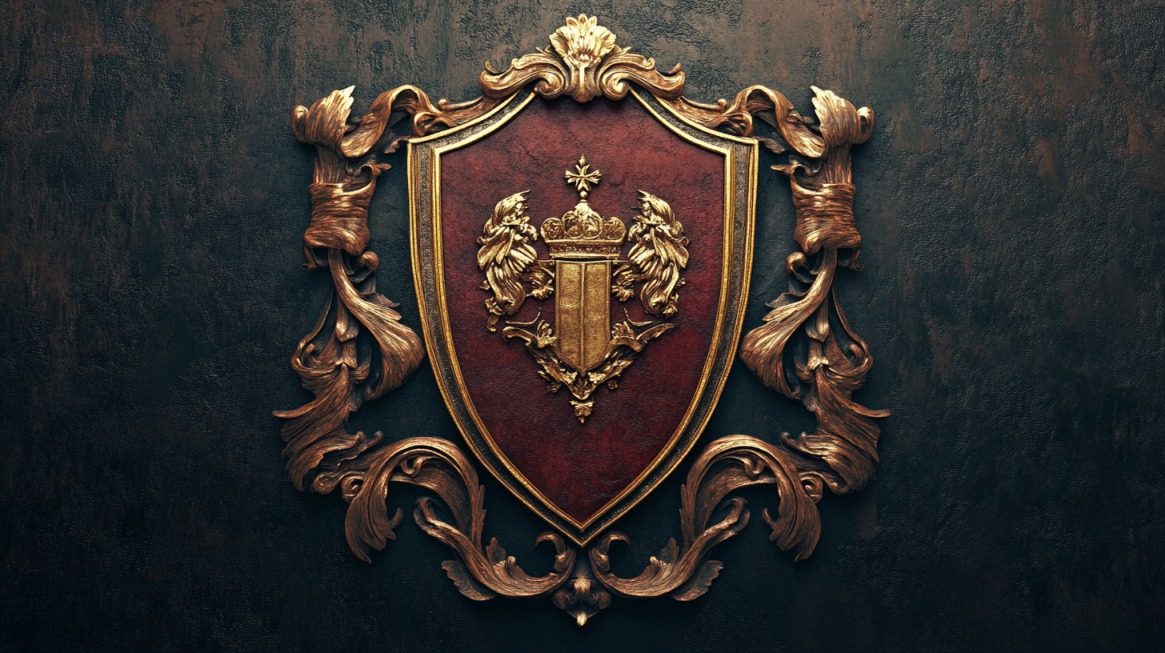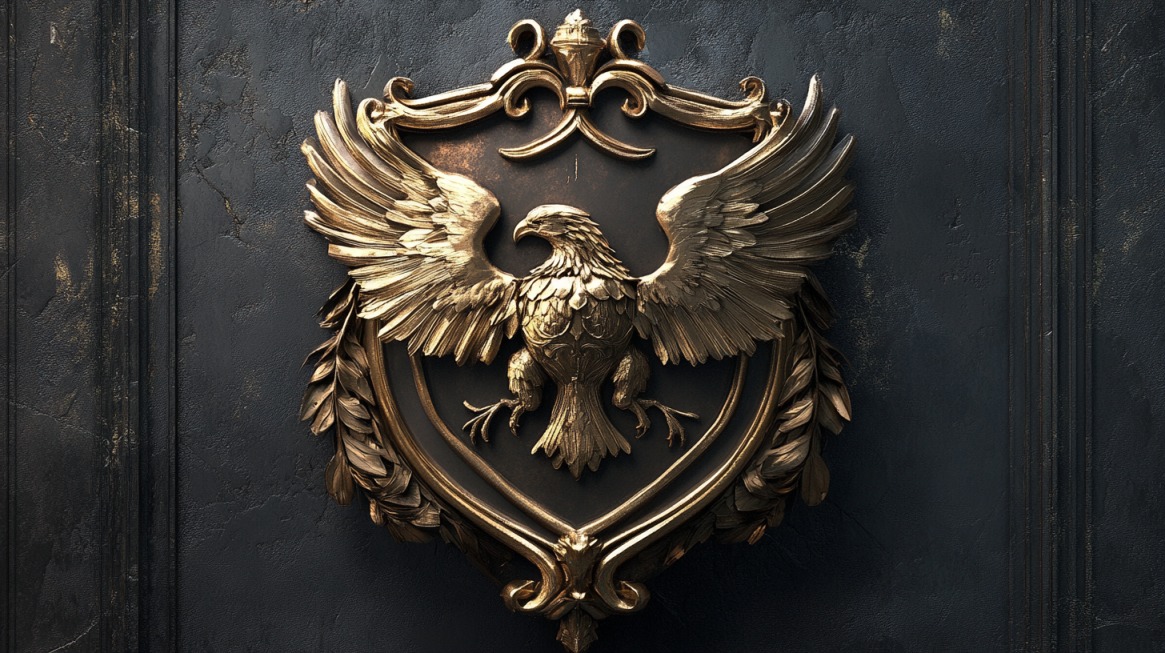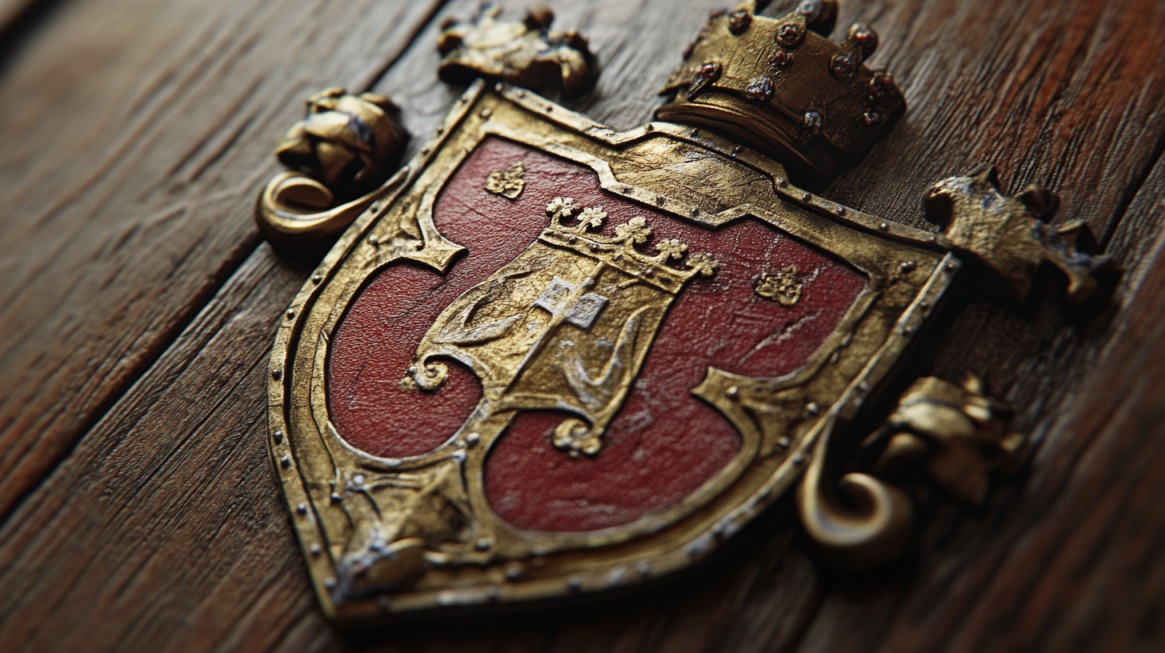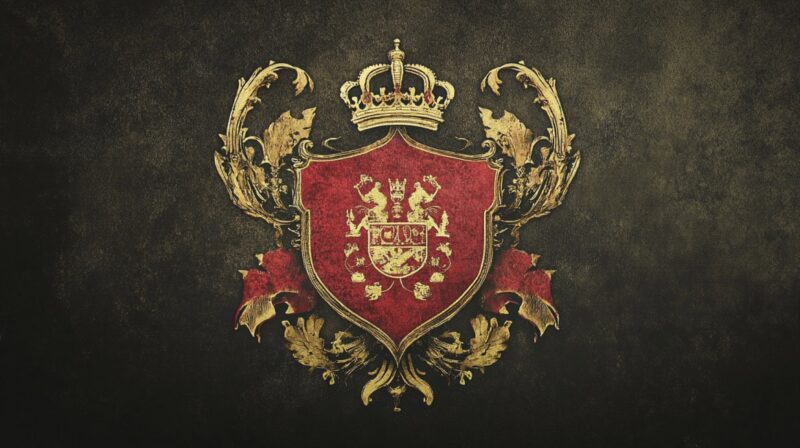Family crest holds a place of honor in history for centuries, representing lineage, achievements, and values.
Heraldry traces its roots to medieval Europe, where knights displayed coats of arms on shields and banners.
Modern family crests continue to symbolize personal identity and family heritage. Creating a family crest can strengthen a sense of belonging and offer a meaningful way to pass down family stories.
Designing a crest involves thoughtful planning, attention to symbolism, and artistic creativity.
Planning Your Crest
Designing a family crest requires thoughtful planning to ensure it reflects family identity and values. A well-crafted crest combines symbolism, history, and personal significance.
Effective planning lays the foundation for a meaningful design that will hold personal and historical value.
Defining the purpose, researching heraldic traditions, and understanding family history are essential steps in the process. Every detail, from color choices to symbolic elements, contributes to the overall story conveyed by the crest.

Define the Purpose
Clarifying why a family crest is important ensures the design reflects its intended purpose. A crest can serve various roles, depending on how it will be used and the message it should convey.
A personal crest may symbolize family pride, while an organizational crest might represent shared values and history.
- Family Pride – A visual representation of family accomplishments and values.
- Legacy – Passing down heritage and family history to future generations.
- Decoration – Displaying the crest on household items, clothing, or stationery.
- Unity – Strengthening bonds among family members through a shared symbol.
- Historical Record – Documenting family lineage and achievements.
Crests are often displayed on formal documents, engraved on family heirlooms, or used as a central feature during family reunions and important ceremonies.
Ensuring that the design reflects the intended purpose allows for a more meaningful and cohesive final product.
Research Heraldic Traditions
Heraldry follows long-standing traditions, with established rules governing colors, symbols, and design elements.
Knowledge of these traditions ensures the crest maintains historical authenticity while remaining visually balanced and meaningful.
- Animals – Lions symbolize courage and strength, dragons represent protection, and stags convey peace and Celtic ancestry.
- Shapes – Chevron designs suggest protection, crosses reflect faith and round shapes signify unity and strength.
- Colors – Each heraldic color holds specific meanings:
- Red – Strength and a warrior spirit
- Gold – Generosity and elevation of mind
- Blue – Loyalty and truth
- Black – Wisdom and constancy
- White – Peace and sincerity
Different heraldic traditions offer variations in style and symbolism. British heraldry often incorporates lions, crosses, and crowns, while French heraldry favors fleurs-de-lis and eagles. German heraldry frequently includes eagles, boars, and wolves, representing strength and tenacity.
Trace Your Family History
Genealogy adds depth and authenticity to a family crest. Researching family lineage allows for the inclusion of symbols and details that reflect cultural heritage and family achievements.
- American Heraldry Society – Provides resources and databases on American coats of arms and family emblems.
- UK College of Arms – Offers guidance on British heraldry and assists with designing crests based on ancestral records.
- Ancestral Findings – Helps trace lineage and uncover ancestral coats of arms and family mottos.
Key details that can enhance the crest’s design:
- National Emblems – Flags, national animals, and geographic references tied to ancestral origins.
- Cultural Motifs – Celtic knots, Native American symbols, or Asian-inspired designs reflecting heritage.
- Family Achievements – Military honors, political accomplishments, or historical figures linked to the family name.
- Religious Symbols – Crosses, stars, and religious artifacts representing faith and spiritual identity.
Personalizing the crest with symbols tied to family history ensures it becomes a meaningful representation of family identity.
Consulting genealogical records and historical archives helps uncover details that make the crest a true reflection of family heritage.
Choosing Design Elements

Designing a family crest requires thoughtful decisions about colors, symbols, mottos, and shield shapes. Each element carries meaning, reflecting family heritage, values, and accomplishments. Traditional heraldry follows established guidelines that ensure the design maintains both visual balance and symbolic accuracy.
Careful selection of these elements creates a cohesive and meaningful representation of family identity.
Colors (Tinctures)
Colors, known as tinctures in heraldry, serve as one of the most recognizable and meaningful elements of a family crest.
- Red – Represents strength, courage, and a warrior spirit.
- Gold (Or) – Signifies generosity and elevation of mind.
- Blue (Azure) – Stands for loyalty, truth, and faithfulness.
- Black (Sable) – Reflects wisdom, constancy, and resilience.
- White (Argent) – Symbolizes peace, sincerity, and innocence.
- Green (Vert) – Represents hope, joy, and renewal.
- Purple (Purpure) – Signifies royalty, justice, and sovereignty.
- Orange (Tawny) – Stands for ambition and strength of character.
Heraldry follows a specific rule of tincture, which prevents placing certain colors together to maintain contrast and visibility.
Metallic colors such as gold and silver (or and argent) should not be placed directly next to each other. Instead, pair metallic shades with standard tinctures like red, blue, green, or black.
Strong contrast ensures the design remains visually striking and easy to reproduce across different mediums.
Mixing too many colors can create a cluttered design. A balanced palette of two to three colors allows for a clean, harmonious look. Red and gold often appear together to reflect strength and generosity, while blue and white emphasize loyalty and peace.
Choosing colors that reflect family values strengthens the connection between the crest and its meaning.
Symbols (Charges)

Symbols, referred to as charges in heraldry, represent personal and family characteristics. Traditionally, symbols were used to signify accomplishments, qualities, and affiliations.
- Lion – Represents courage, strength, and leadership.
- Dragon – Symbolizes fierceness, protection, and power.
- Stag – Reflects Celtic ancestry, peace, and harmony.
- Griffin – Represents valor, watchfulness, and military strength.
- Horse – Symbolizes readiness for battle and loyalty.
- Bear – Stands for strength and protection of a family.
- Oak Tree – Represents endurance and stability.
- Sun – Signifies glory, power, and vitality.
- Moon – Symbolizes serenity and reflection.
- Cross – Represents faith, sacrifice, and divine protection.
Animals frequently appear on family crests due to their connection to personal traits and societal roles. A lion, for instance, signifies leadership and fearlessness, while a griffin suggests a balance of strength and wisdom. Combining different symbols allows for a multi-layered representation of family history.
Selecting charges should reflect traits or values passed down through generations. For instance, a stag might honor Celtic ancestry, while a bear could symbolize familial protection. Combining symbols should maintain balance within the design. Overcrowding reduces clarity and detracts from the impact of individual symbols.
Patterned designs, such as chevrons, crosses, or stripes, add further depth to the design. A cross often appears in Christian family crests, while a chevron might reflect military service or protection. Careful placement of symbols ensures the crest remains balanced and visually appealing.
Motto
A motto provides a verbal representation of family identity and values. Short, impactful phrases reflect the principles that define the family legacy.
- Fortis et Fidelis – Strong and Faithful
- Semper Paratus – Always Ready
- Nil Desperandum – Never Despair
- Audere Est Facere – To Dare is to Do
- Per Ardua Ad Astra – Through Struggles to the Stars
Choosing a motto involves selecting words that hold significance for the family’s values and experiences. A family rooted in military tradition might prefer a motto reflecting bravery and readiness, while one with artistic ties could focus on creativity and inspiration.
Positioning the motto on the crest influences its visibility and impact. Placing it above the shield emphasizes its guiding role while positioning it below the shield reinforces the idea that family values are the foundation of its identity.
Mottos should remain simple and concise, ideally no more than five or six words. Longer phrases reduce clarity and make the crest harder to reproduce accurately. Latin mottos remain popular due to their timeless nature and connection to heraldic tradition.
Shield and Layout

The shape and layout of a shield reflect the overall style and meaning of a crest.
- Heater Shield – Traditional medieval shape, associated with knights and chivalry.
- Round Shield – Represents unity and strength.
- Kite Shield – Linked to early knights and military service, symbolizing readiness for battle.
- Quartered Shield – Divides the crest into four sections, often used to represent different family lines or ancestral ties.
- Lozenge Shield – Diamond-shaped design, traditionally used by female nobility.
Positioning symbols within the shield follows heraldic conventions. The most important charge is often placed at the center or top of the shield. Symmetry creates visual balance, with charges mirrored on either side when possible.
Arranging symbols in a balanced manner ensures each element remains clear and recognizable. Multiple symbols should complement one another without overcrowding the shield.
Using patterns or lines, such as a fess (horizontal stripe) or a pale (vertical stripe), creates structure and separation between symbols.
Color placement also affects visual balance. A gold lion against a red background creates contrast and emphasizes strength and bravery.
A blue cross on a white background highlights loyalty and faith. Ensuring that symbols and colors complement each other strengthens the overall visual impact of the crest.
Designing the Crest
A crest should combine symbols, colors, and shapes that accurately represent family history and values. Each element must work together harmoniously to create a balanced and visually appealing design.
Following established heraldic guidelines ensures the crest remains authentic and meaningful. Using formal heraldic language and accessible design tools can simplify the process while preserving the integrity of the crest’s symbolism.

Create a Blazon
A blazon is a formal description of a crest in the language of heraldry. Blazoning follows specific grammatical rules and conventions established over centuries.
Colors, symbols, and shield shapes are described using precise terms that allow others to recreate the design accurately.
- Argent – Silver or white, representing peace and sincerity.
- Gules – Red, symbolizing strength and a warrior spirit.
- Or – Gold, associated with generosity and wisdom.
- Azure – Blue, representing loyalty and truth.
- Sable – Black, symbolizing wisdom and constancy.
- Vert – Green, representing hope and joy.
- Arrangement of symbols also follows strict heraldic rules:
- Rampant – An animal standing on one hind leg, symbolizing strength and aggression.
- Passant – An animal walking with one forepaw raised, symbolizing courage.
- Langued – Describes the color of an animal’s tongue.
- Armed – Refers to the color of an animal’s claws or horns.
Example of a blazon:
“Argent, a lion rampant gules armed and langued azure, upon a chief or three fleurs-de-lis sable.”
- “Argent” defines the field (background) color as silver or white.
- “Lion rampant” describes the symbol and its posture.
- “Gules” specifies the color of the lion.
- “Armed and langued azure” refers to the lion’s claws and tongue being blue.
- “Chief or” indicates a gold stripe at the top of the shield.
- “Three fleurs-de-lis sable” describes three black lily flowers positioned on a gold stripe.
Blazoning ensures that a crest’s design can be accurately reproduced and interpreted according to established heraldic standards. Writing a clear and grammatically correct blazon helps maintain consistency across different reproductions of the crest.
The Bottom Line
Creating a family crest blends tradition with personal identity.
Involving family members during the design process strengthens shared connections and enhances the meaning behind the crest.
A thoughtfully designed crest serves as a lasting tribute to family history and values, offering future generations a tangible connection to their roots.







